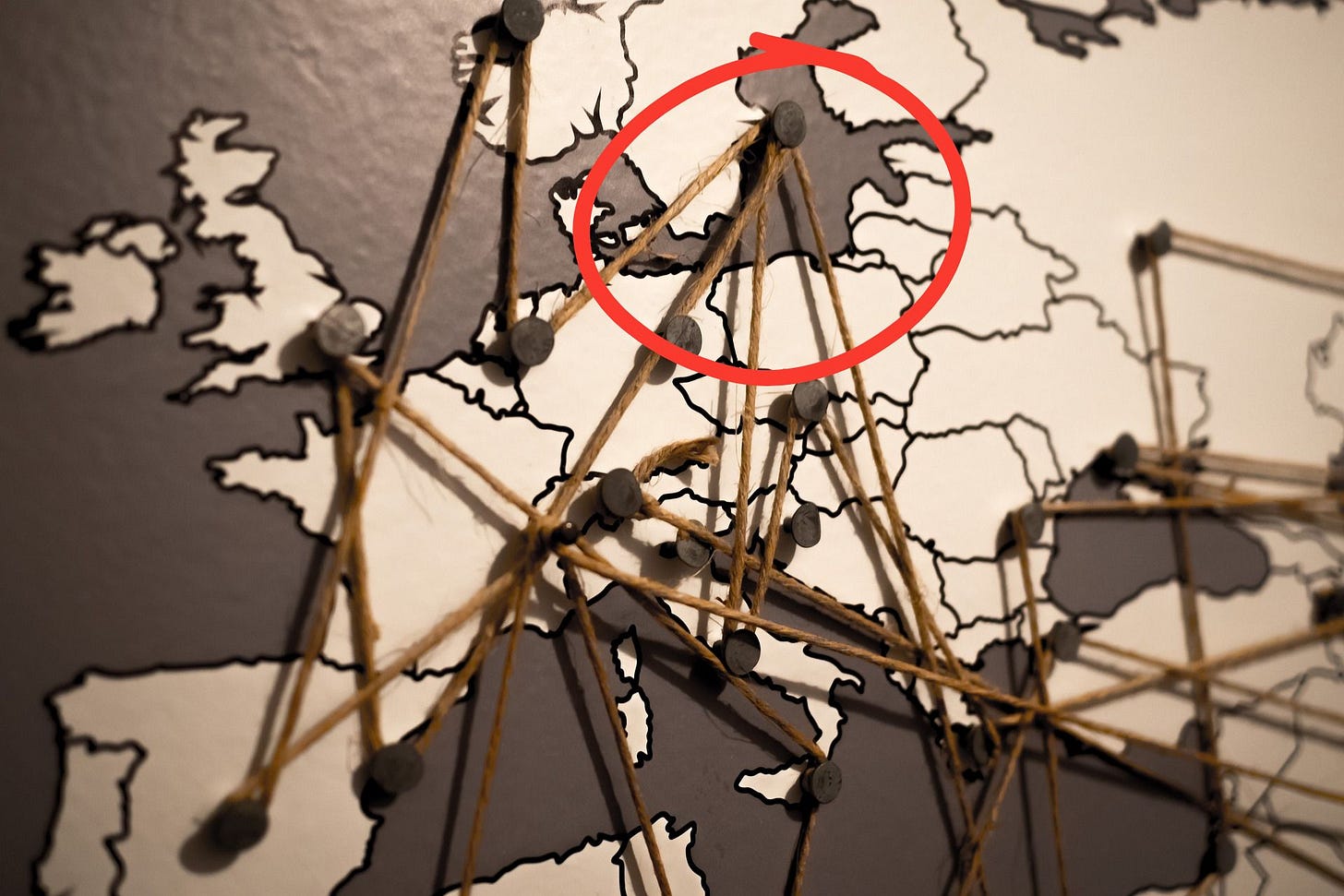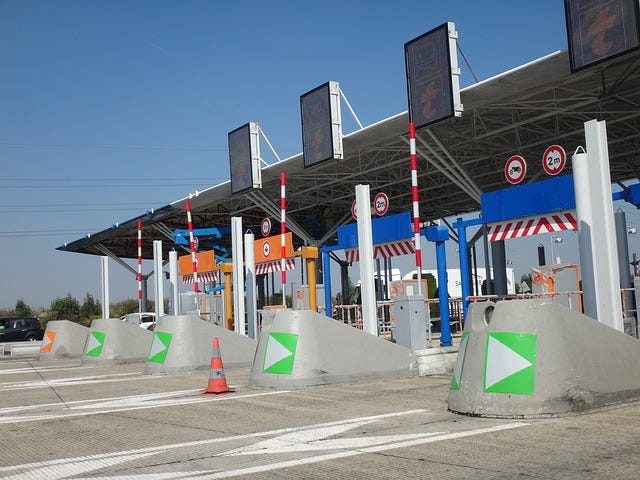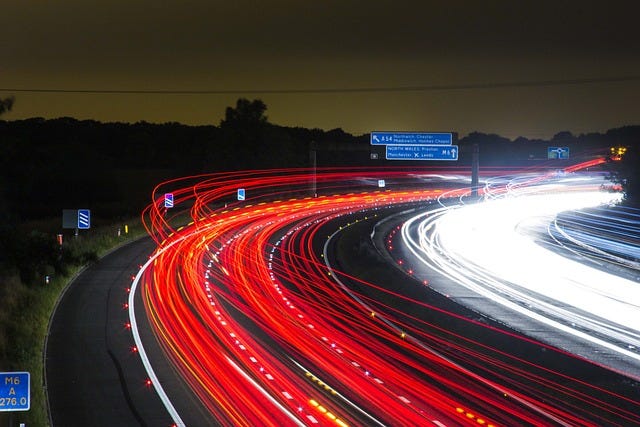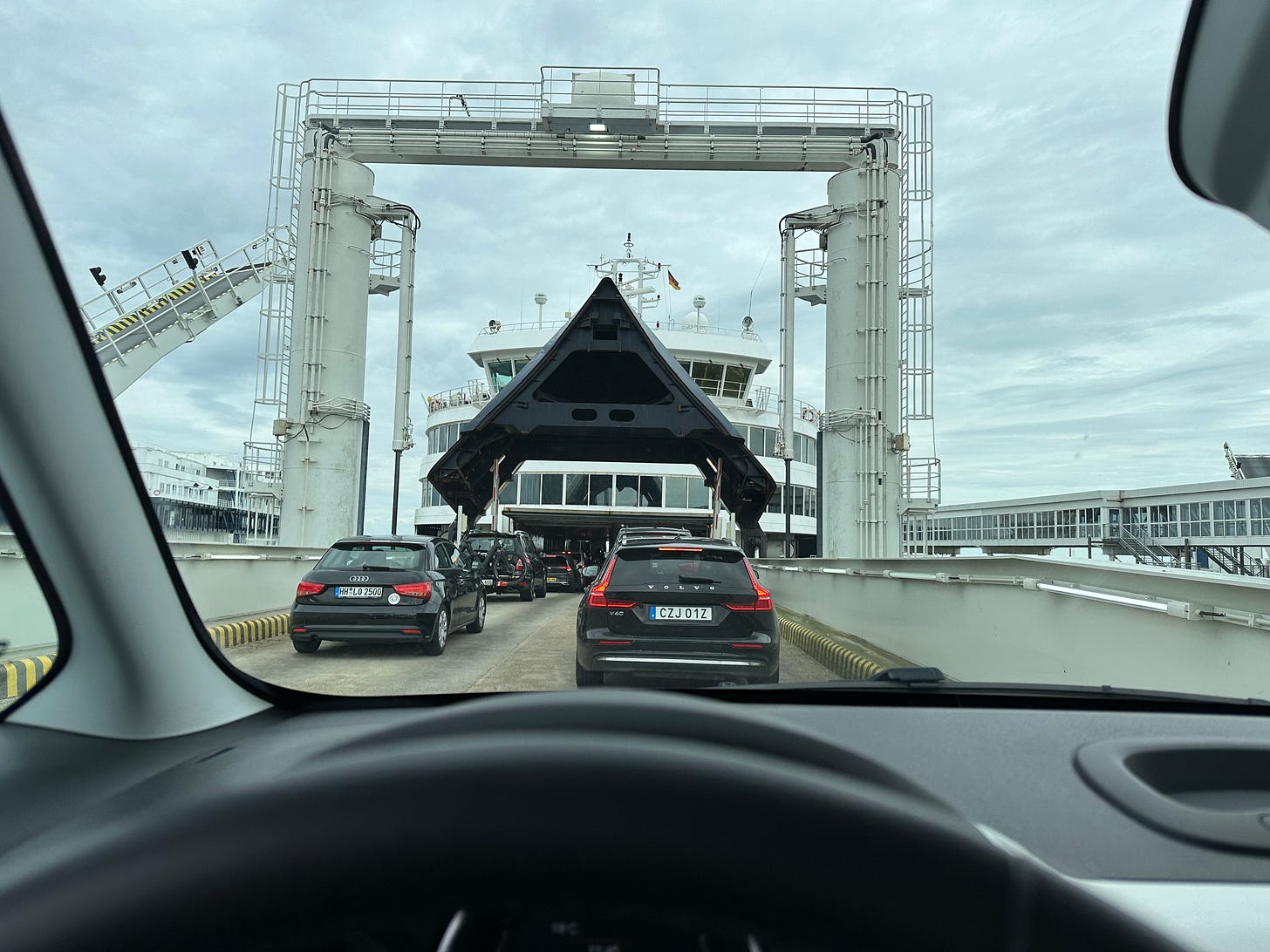It is early Sunday morning, 11 August. I am sitting on the patio of our hotel in Munkebo Denmark. Onix is lying at my feet. We have stopped in 7 cities (driven 3200 kilometers, nearly 2000 miles) since leaving Guimaraes. I'll let you know about our stops in future posts. But today, I want to share some observations about driving in Europe.1
Road Quality
We have driven in Portugal, Spain, France, Belgium, Germany, and Denmark so far. In general, the roads have been very good. Regarding comfort, when driving on the highways … I would say Spain lags a bit behind. It is certainly not terrible…we haven’t encountered any unfilled potholes. But the right lane can get a bit bumpy on the Spanish highways.
Most drivers we have encountered only use the left lane when passing. (Thank you Jesus … they know how to drive. I used to scream while banging on the steering wheel when driving in the US behind someone going 10 miles under the speed limit in the left lane. But I digress….) If the highway is free of other traffic, I will admit to staying in the left lane in Spain.
Even the back, country roads are pretty good. Though, we have found ourselves on one-lane roads that support two-way traffic. But you take your time…beep (happily) before turning a blind corner, and pull way over when encountering oncoming traffic. It’s all good…
Tolls
Like traveling between states in the US, policies and prices related to tolls vary from country to country. The tolls on Portugal’s A1 and A2 are pretty steep. However, our transponder allows us to “ignore” the expense.2 We even found that the transponder worked in southern Spain. (This wasn’t a surprise as we found it works in parking lots in Sevilla as well.) But as we approached the French border, we were forced to use a credit card.
Speaking of credit cards…make sure yours is handy when driving in France. We learned the roads in France are privately owned. You will rack up significant charges as you travel across that country. Sometimes there is a ticket…other times just a flat fee. At some point I suspect we will calculate the full cost of this extended road trip…but we are having too much fun to do that now.
When we entered Germany we were pleasantly surprised by the absence of tolls in this country! We have also not encountered tolls in Denmark, except when crossing water…more on that below.
Speed Limits
Police officers or highway patrolmen hidden on the side of the road with a speed gun are an American thing. (Perhaps the US has adopted more efficient methods since we left.) Instead in Europe, radar cameras are stationed on nearly all highways. Your car does alert you and a sign on the roadside tells you that you are approaching such an area. (Didn’t we suction cup radar detectors to our windshields, in the old days? Weren’t these considered illegal in many states? … I say yes. Denise says I am making this up.)
In Portugal and Spain, the top speed is 120 kph (74.5 mph). In France, many roads allow you to drive at 130/kph (80.7/mph). In Germany, when a highway is not marked, you are free to use your best judgment. As we are not accustomed to driving at 100/mph, we kept to 130/kph. I would caution you however, the Germans will suddenly place a sign stating 130, then 110, then 80 on the highway … and often radar is installed at these locations. (Very sneaky!)
So What About the Ferry?
We rely on Google Maps when traveling. And the truth is I never look at the “steps” before we start on our journey. So as we approached the toll booth of the ferry we were surprised. I guess we should not have been. I knew we needed to cross a body of water to get to Copenhagen. As the ferry ride took 45 minutes, it would have been an incredibly long bridge!
We approached the toll booths with just a bit of trepidation. But workers were milling about, and you could choose English to interact with the machine. We entered the number of persons in the car, used our credit card to pay the 129€ fee, and were instructed to wait in lane number 12. About 20 minutes later, we drove onto the ferry.3
After parking, we followed the crowd up a few stairs and found ourselves on a deck with restaurants and shops. Onix and I hung out at one of the tables while Denise went off to find sandwiches, fries, and a beer. (As I was driving, Denise drank the beer.) And Onix and I enjoyed the ride….
Many Americans are surprised how easy it is to travel between European countries. We have not encountered border checks…there is no need to present your passport…it is akin to driving from Pennsylvania to New Jersey. And so far no one has asked to see Onix’s passport either.4
Sintam a alegria, Beijinhos,
Nanc
Final Note: My subscribers and followers know that I still follow US politics very closely. I admit, I am feeling MUCH BETTER! And based on the folks who I have spoken with in the US…they are too!!!5Americans can vote even though they are living abroad. If you haven’t registered, time is running out to register.
Though I don’t discuss it in this post, circles or roundabouts are common throughout Europe. Ensure you know how to navigate these if you plan to drive in Europe.
At one point in my career, I had to travel on the PA turnpike to get to my office. The daily commute could be 40 minutes, or 1.5 hours in rush hour. I never understood those commuters who did not have a transponder in their car and waited an additional 20 minutes to exit the highway at King of Prussia. Also, you should know that many toll roads become “free” in Portugal starting 1 January 2025.
Even with the wait, Google calculated that this was the quickest route.
Yes, your pet is required to have a passport when traveling in Europe. Our vet explained that she needed to stamp it within 30 days of our departure from Portugal and that hotels may want to see it. The passport shows that Onix’s vaccinations are up to date. Fortunately, none of the countries we are visiting require her to receive tapeworm medication.
I have spoken with several readers who have put their plans to move out of the US on hold.










Great write up. Feel like I am traveling along with you on this trip. Yes people had those mounted on their cars to detect speed traps, and in many states they were illegal. Hope you all continue to have a wonderful time. Things are much better - we have two Harris/Walz signs on our lawn and stickers on the car, but we live in a very blue NE state. There is a renewed feeling of hope. Our plans to move to Portugal in 2027 after our son starts college are still in place, looking forward to it. :)
As a Brit who lived for a short time in the USA, and loved the country(50 years ago), I too feel so much happier with the way things have changed over there in the last couple of weeks.
There is hope for a better future for us all.
Love this week’s article, thank you